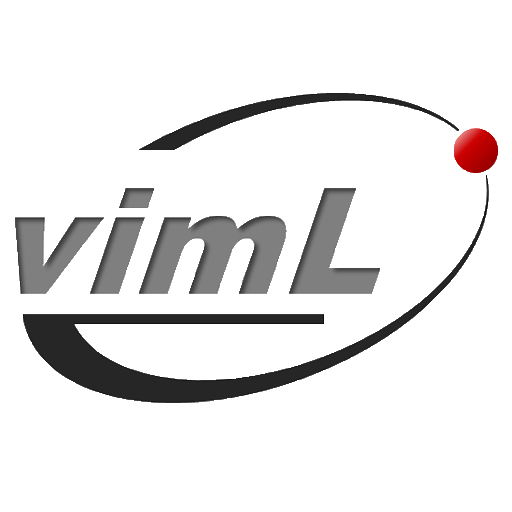消息來源是《Introducing the Release 256 Family of Drivers》,主要的重點,就是 nVidia 第一款「256 家族的驅動程式(Release 256 Family of Drivers)」(預計版號為 256.xx 到 259.xx)出來了∼而第一個版本,是 257.15 Beta 版,支援 GeForce 6, 7, 8、GeForce 100 / 200 / 300 / 400 系列的顯示卡以及 ION。
桌上型顯示卡的下載頁面為:
而一個比較重要的點是,nVidia 在 256 家族驅動程式開始,將會為筆記電腦的行動式繪圖晶片也提供同版號的驅動程式!在以往來說,筆記電腦的顯示晶片驅動程式大多會落後桌上型的好一段時間,而現在筆記型電腦的顯示晶片終於在驅動程式的進度上,可以和桌上型的平起平坐了!有使用的人,可以到 Verde Notebook Driver 這個網頁看看。(不過 Heresy 實際測試沒辦法抓到 256 的驅動程式…)(另外,Quadro 的版號還是和 GeFroce 不同步啊!)
而回過頭來,從本來的 19x 一下跳到新的 25x,那在這第一版的 257.15 這版驅動程式裡,多了什麼功能呢?主要有下面幾項:
- 透過 NVIDIA 3D Vision 技術加入對藍光 3D(Blu-ray 3D)的支援,另外應該也有針對 Blu-ray 3D 所使用的 MVC(Multiview Video Coding) AVC 做硬體解碼的支援。
(不過由於是要基於 3D Vision,所以要用的人必須要是 Windows Vista 或 7 了) - 針對 GeForce GTX 400 進行最佳化,增加效能。
- 針對 GeForce GTX 400 系列繪圖處理器加入OpenGL 4.0 支援。這部分的重點主要應該就是對應到 Direct3D 11 的 tessellation 了∼
- 支援 nVIDIA CUDA 3.1。主要是提升雙精度浮點數的效能。
- 為 3-way SLI 的電腦系統加入「終極反鋸齒模式」的支援
- 針對 GeForce 200 系列繪圖處理器,在 3-way SLI 下支援 48x SLI Antialiasing
- 針對 GeForce GTX 400 系列繪圖處理器,在 3-way SLI 下支援 96x SLI Antialiasing
- 提供更高品質的(Ambient Occlusion)選項。
- 針對多 GPU 系統提供全新 NVIDIA 控制台設定頁面。這部分主要是可以讓多張顯示卡的系統,做更多細節的設定∼除了可以指定 PhysX 要使用哪個 GPU 外,甚至也可以指定 CUDA 程式要在哪個 GPU 上跑!

下方左圖則是針對個別程式設定要用那些 GPU 來跑 CUDA 的介面,下方右圖則是在單一顯示卡的狀況下,設定 PhysX 的介面(如果有多張卡就會像上圖一樣)。


不過這邊 Heresy 好奇的是,現在看來至少有兩個部分(驅動程式、應用程式)可以設定 CUDA 的程式要用哪個 GPU,那如果兩者不同時會怎樣呢?而在設定 CUDA 要用哪顆 GPU 的時候,其實也包含了對 PhysX 的設定,如果和 PhysX 頁面的設定不一樣,不知道又會採取哪邊的設定?
所以,主要的改變是什麼呢?其實 Heresy 會覺得前面幾項都算是正常的改版變化,包括藍光 3D、OpenGL 4.0 等地支援,都算是預計之中;而即使是變態到翻的 48X / 96X 反鋸齒,也都還算是效能的加強。不過在多 GPU 的新設定功能上,應該就算是在驅動程式上相對大的改變了!不過說實話,這點對一般人來說搞不好反而意義不大就是了…
而 CUDA 3.1 的部分,Heresy 不確定這邊指的是否為正式版?實際上在官網都沒看到任何消息,即使是 nVidia 官方論壇裡也沒找到公告;但是如果進入註冊使開發者區的話,的確是可以找到前幾天發布的 3.1 Beta 版的 CUDA 的!主要的更新內容可以參考《NVIDIA CUDA 3.1 beta available for registered developers》一文,內容如下:
== Release Highlights ==
Math Libraries Performance Improvements, including:
- Significant improvements in double-precision FFT performance on Fermi-architecture GPUs for 2^n transform sizes
- Streaming API now supported in CUBLAS for overlapping copy and compute operations
- Real-to-complex (R2C) and complex-to-real (C2R) optimizations for 2^n data sizes
- Improved performance for GEMV and SYMV subroutines in CUBLAS
- Optimized double-precision implementations of divide and reciprocal routines
Unified Visual Profiler now supports both CUDA C/C and OpenCL, with:
- Support for start/stop profiling at runtime so you can focus on critical areas of long-running applications
- Support for CUDA Driver API tracing
Additional support for Fermi-architecture GPUs
- Significant performance improvement in the erfinvf() function
- 16-way kernel concurrency
- Support for printf() in device code
- cuda-memcheck updated for Fermi-architecture GPUs
Driver/Runtime interoperability allows mixing of CUDA C Runtime (and math libraries) with CUDA Driver API
New and updated SDK code samples demonstrating how to use:
- Function pointers in CUDA C/C kernels
- OpenCL / Direct3D buffer sharing
- Hidden Markov Model in OpenCL
- Microsoft Excel GPGPU example showing how to run an Excel function on the GPU
Note that this limited Beta release includes driver packages for Linux, MacOS, and Windows TCC (Tesla Compute Cluster) only. Standard Windows driver packages with graphics drivers and support for all NVIDIA GPUs will be available next month with the CUDA Toolkit 3.1 production release. In addition, Linux developers should note that the cuda-gdb hardware debugger was not ready for this beta release, but will be included in the production release. Windows developers should be sure to check out the new debugging features in Parallel Nsight for Visual Studio at www.nvidia.com/nsight.
Please refer to the release notes and Getting Started Guides for more information.
所以,有在追新版的可以考慮更新了!
